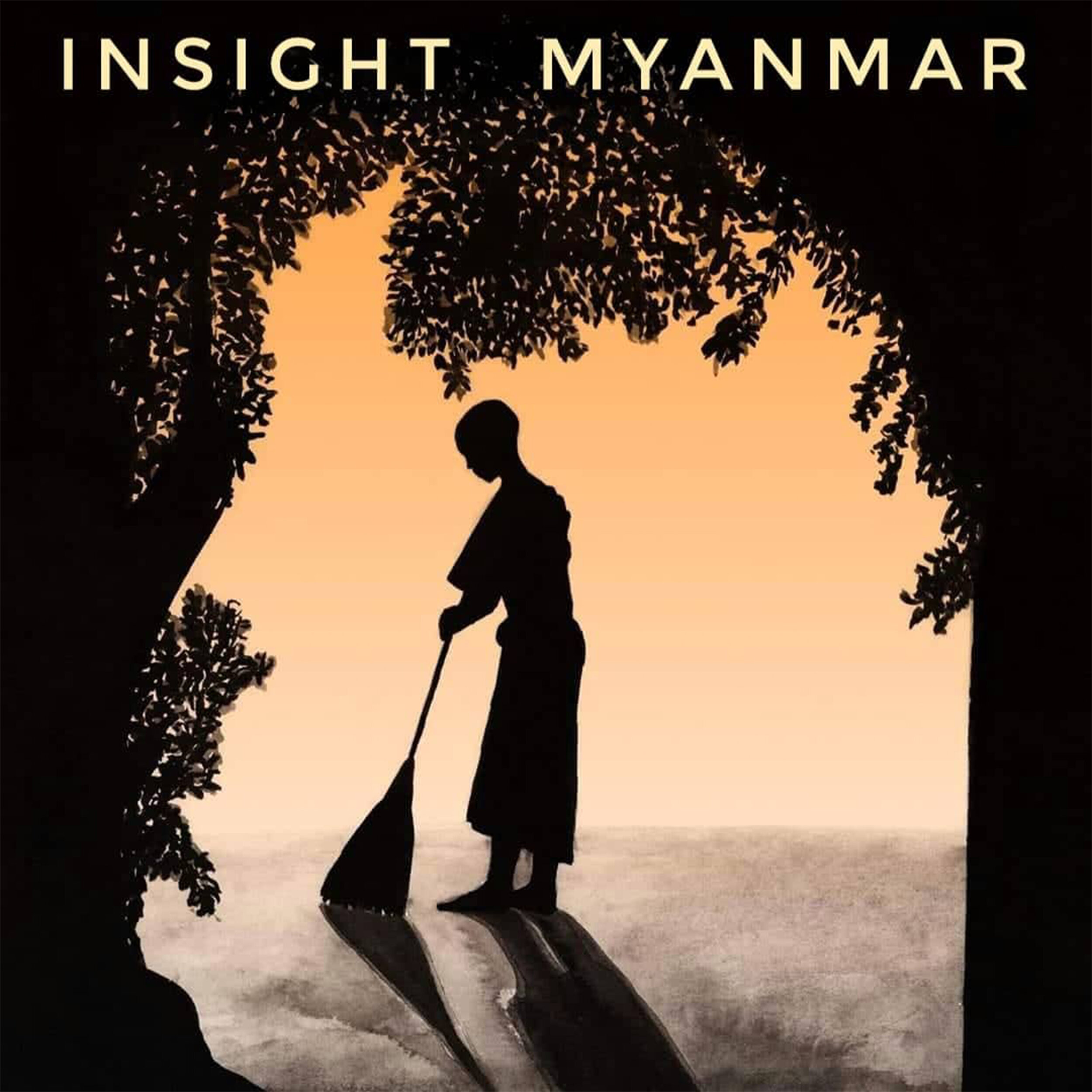War-affected monastic IDPs who could not take Vassa
Sayadaw U Ottama (name changed for his security) was unable to fully observe his monastic precepts during this year’s Vassa, the sacred rain retreat period. As the abbot of a monastery in a village in Mone Township, located in the eastern part of Bago Region, he shared the following words.
“The junta is hunting monks, forcing them to leave their monasteries and making it impossible for them to follow monastic discipline.”
"Since before Vassa in May, I’ve been unable to perform my regular monastic duties because I had to flee from my monastery and return five times," said a 45-year-old monk with 23 years in monastic life.
The military junta's clashes with local insurgents have escalated in Mone Township in eastern Bago Region since 2022, with the situation growing dire this year. The junta’s forces occupied monasteries, interrogating everyone, including monks, and endangering their safety.
Fighting between the junta's forces and the joint insurgent forces of the KNLA and PDFs has erupted repeatedly in Mone and Kyauk-gyi areas since 2022, resulting in hundreds of clashes over the past two years. According to local charities assisting internally displaced persons (IDPs), more than 30 civilians have been killed and around 100 injured due to junta airstrikes and artillery.
"These intense battles have forced not only laypeople but also monastics to flee their homes. Many monks couldn’t stay in their monasteries or observe Vassa, the monastic rain retreat, this year," said Venerable Ottama.
On May 17, at around 5 p.m., the monk and five other monastics had to take refuge in a bomb shelter when the junta raided their village in Mone Township. They spent the night there before evacuating to another village’s monastery before dawn.
"When the army enters a village, they often take over the monastery as a base. They even question the monks. We fear being caught in the crossfire if opposing forces attack while they’re stationed there," the monk explained.
Leaders of the Karen People’s local emergency rescue committee report that about 70,000 locals from 60 villages in the Mone and Kyauk-gyi areas have fled due to the fighting, including 200 monks. Some monastics are now staying in remote monasteries. The Karen People Emergency Rescue Committee has stressed that both monastic and lay IDPs urgently need food, medicine, and shelter.
Many monks fled with villagers through forests and across streams, facing great difficulty in maintaining their monastic practices. "Forget about observing Uposatha (Buddhist holy days); it’s hard for them even to maintain basic daily monastic routines like eating before noon and maintaining personal hygiene," a villager noted.
"We are constantly afraid of artillery fire landing near us," added Venerable Ottama.
In June 2023, artillery fire from the junta's military bases—including the Nat Than Quin Security Check Point, Troop 60, and Troop 599—struck villages, killing a 60-year-old monk from Taw-kyaung-pauk Village. The conflict, unprecedented in mainland Myanmar before the 2021 coup, now endangers the lives of monastics and hinders their ability to practice their religion.
Sayadaw Min Thon-nya explained, "Monks are supposed to remain in their monasteries throughout the rain retreat. Now, many can’t even live in their monasteries year-round, let alone during Vassa. Some monks have fled to other countries for safety."
He continued, "The junta is hunting monks, forcing them to leave their monasteries and making it impossible for them to follow monastic discipline." Min Thon-nya, who has fled to Thailand for safety, added, "The Buddha allowed monks to leave their monasteries for up to seven days in emergencies. But in these combat zones, many monks have been forced to leave for much longer, breaking their Vassa retreat and missing the Kathina ceremony."
Since the military coup led by Min Aung Hlaing, junta forces have occupied monasteries, disrobed, arrested, and imprisoned monks. An ICJ report revealed that between February 2021 and April 2023, 77 monks were arrested, and 33 have died. Among the victims was Venerable Gandhasāra, an alumnus of Sitagu International Buddhist College, who was shot dead by junta forces while aiding IDPs in his native village, Depeyin-kwe.
In addition, over 90 Buddhist religious buildings have been destroyed by airstrikes, artillery, or fires, the highest number reported. "In Mone Township, the number of monks in monasteries has significantly declined," said monastic IDPs. "Where there used to be at least 10 monks and novices, now there are only three or four," Venerable Ottama stated.
Young novices, too young to flee safely, were disrobed and sent back to their parents. Monks who refused to disrobe relocated to safer cities like Taungoo, Ye-tar-she, Swar, or Yangon. In the combat zones, the absence of monks meant that people could not hold traditional funeral ceremonies, sometimes delaying them for a month until monks returned.
"In Mone Township, due to the junta’s attacks, traditional religious ceremonies, including funerals and merit-making events, couldn’t be held openly, as no one dared to organize them," Venerable Ottama said.
Venerable Min Thon-nya concluded, "The situation is dire. It’s not just that monks cannot observe Vassa or perform the Kathina ceremony. Under military rule, monastics cannot live in their monasteries, many are in hiding, and some are imprisoned. Worse still, they are unable to teach the Dhamma. This loss of the right to teach the path of liberation represents a profound disruption of the Dhamma's continuity in our Buddhist country," added a leading monk of the Spring Revolution.
